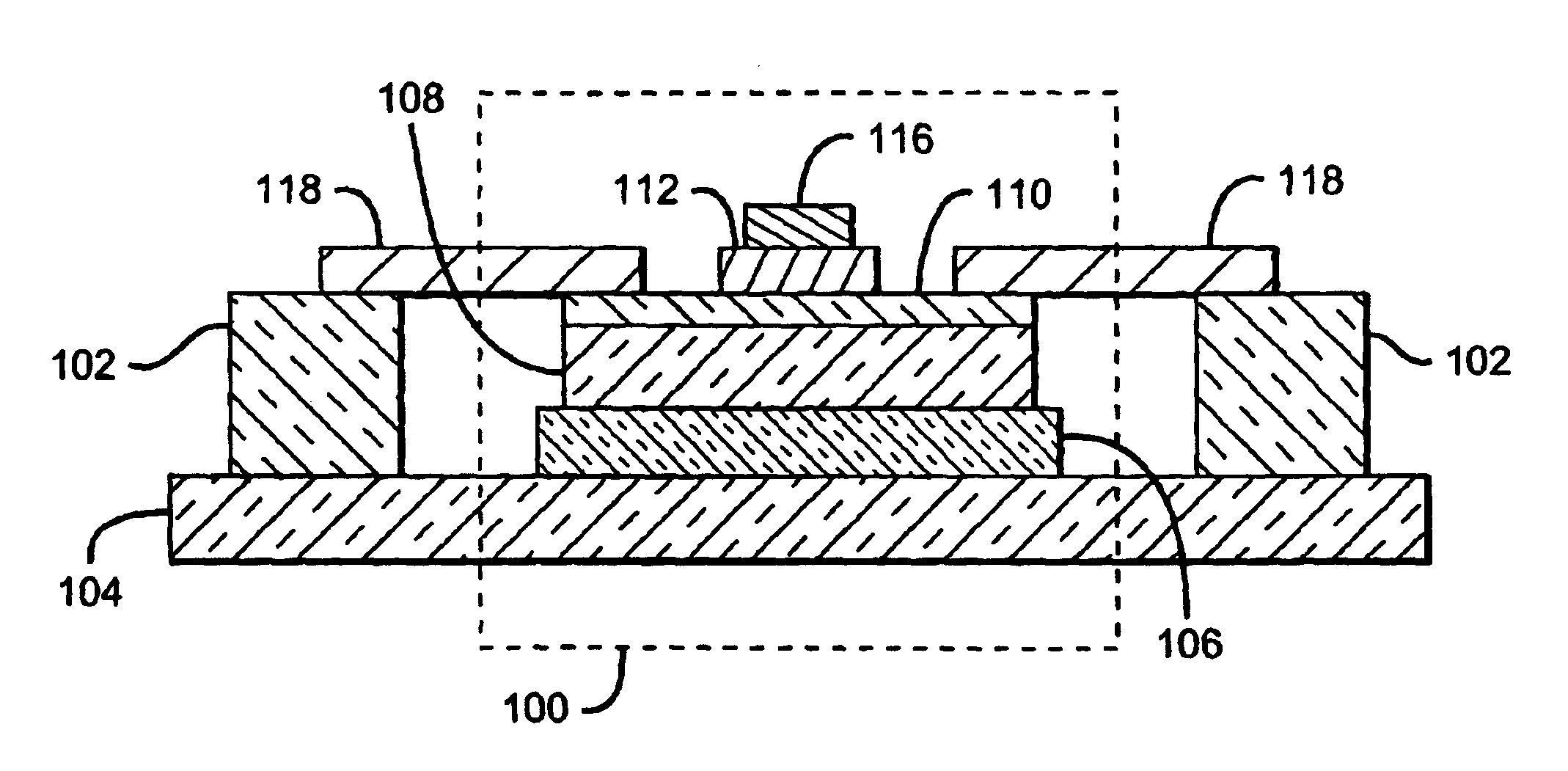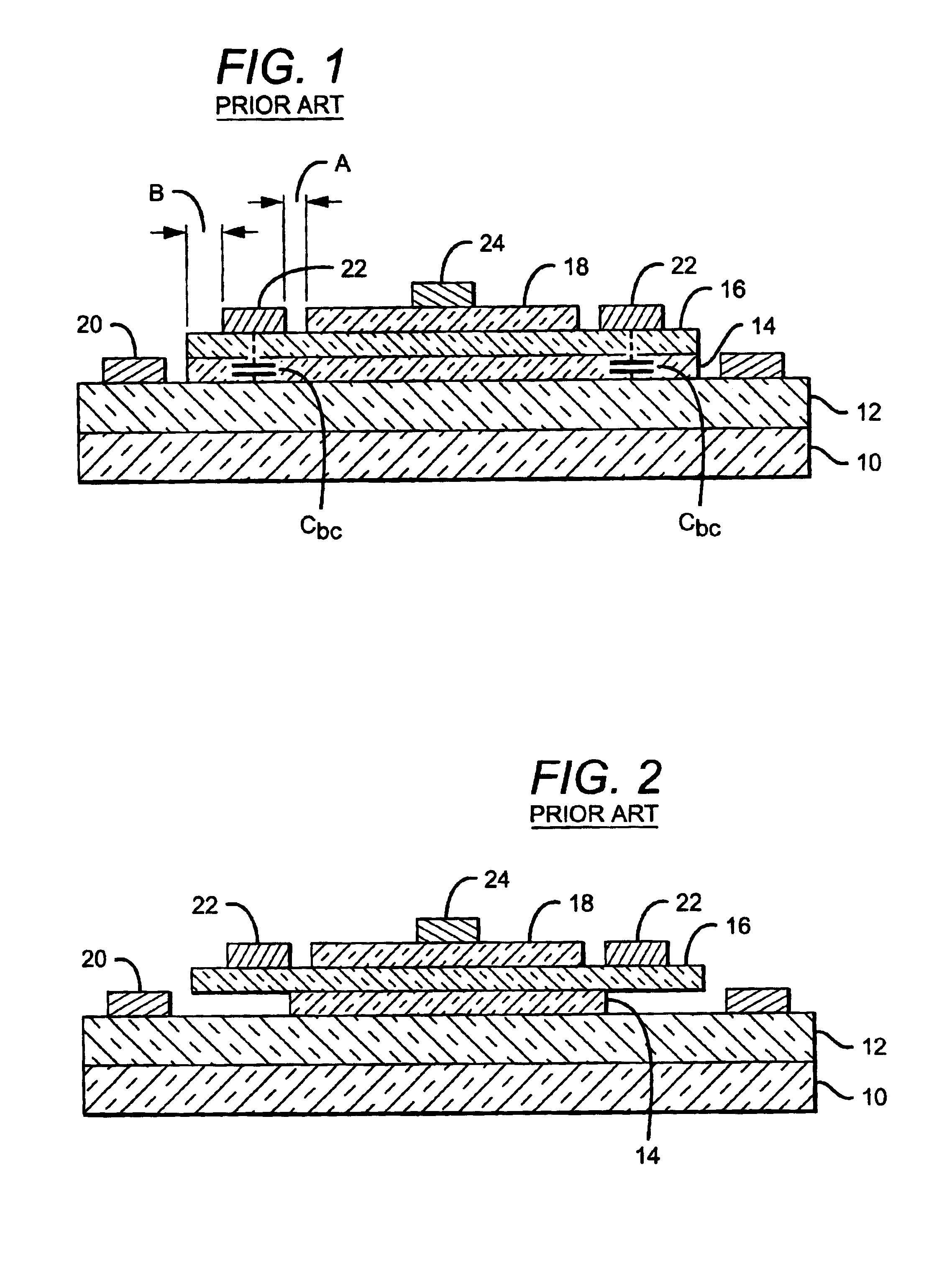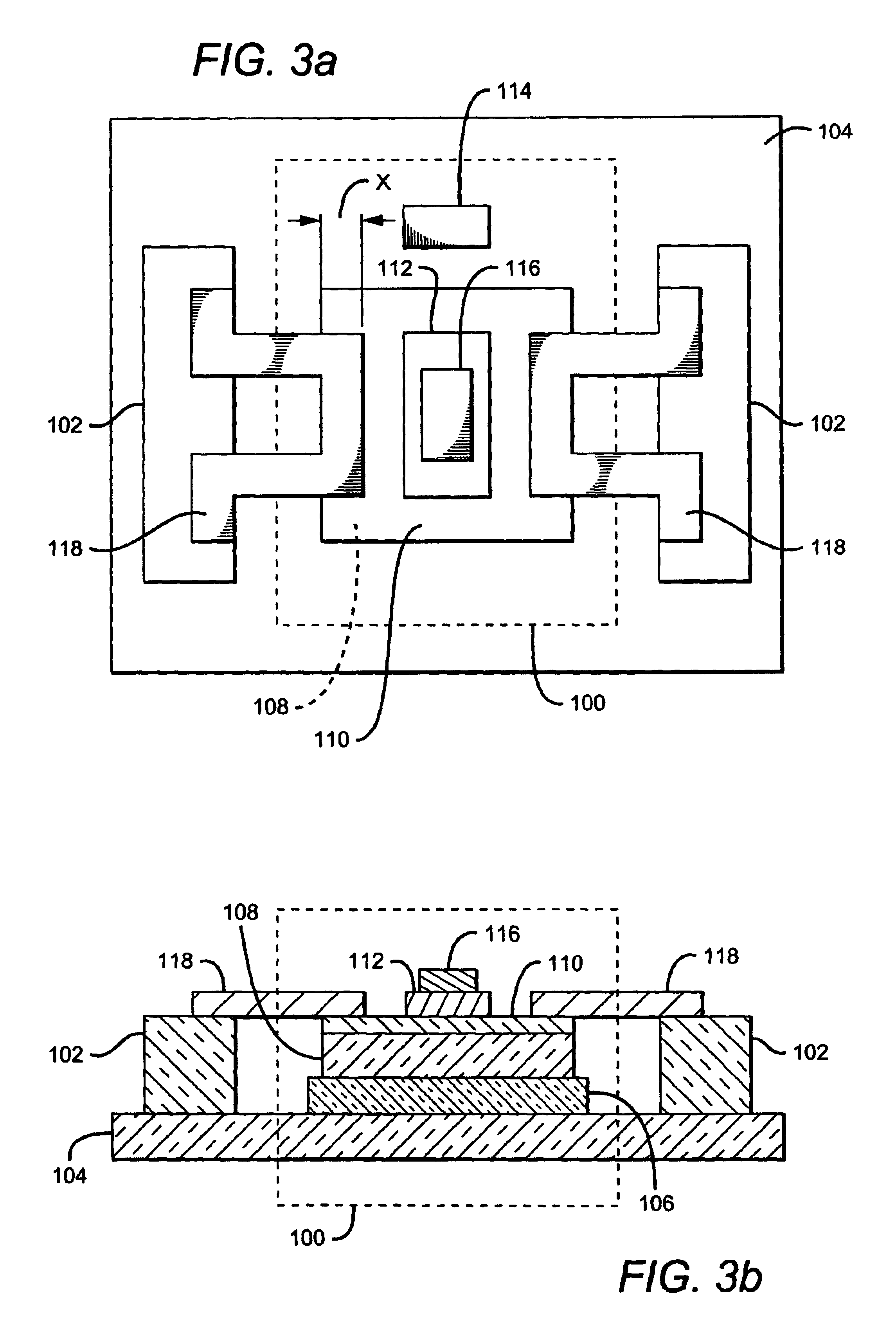Mechanically-stable BJT with reduced base-collector capacitance
a technology of bipolar junction transistors and capacitance reduction, which is applied in the direction of semiconductor devices, electrical devices, and semiconductor/solid-state device details, etc., can solve the problems of device useless, affecting and the overhanging edge of the base is susceptible to breakage, so as to maintain the mechanical stability of the device and reduce the capacitance of the base collector
- Summary
- Abstract
- Description
- Claims
- Application Information
AI Technical Summary
Benefits of technology
Problems solved by technology
Method used
Image
Examples
Embodiment Construction
An exemplary embodiment of a mechanically-stable BJT with reduced base-collector capacitance is shown in FIGS. 3a (plan view) and 3b (corresponding sectional view). The device comprises a BJT structure 100 and at least one support post 102. BJT structure 100 comprises a semi-insulating substrate 104, on top of which is formed a subcollector layer 106 (not shown in FIG. 3a for clarity). A collector layer 108 is on the subcollector, a base layer 110 is atop the collector, and an emitter 112 is formed on the base. A metal contact 114 (not visible in FIG. 3b) is formed on subcollector 106 to provide a collector terminal for the BJT, and a metal contact 116 on emitter 112 provides the device's emitter contact.
Support post 102 is formed adjacent to BJT structure 100, but is physically and electrically isolated from the BJT structure. A metal contact 118 is formed which extends from the top of the support post to the nearest edge of base 110, thereby bridging the physical and electrical se...
PUM
 Login to View More
Login to View More Abstract
Description
Claims
Application Information
 Login to View More
Login to View More - R&D
- Intellectual Property
- Life Sciences
- Materials
- Tech Scout
- Unparalleled Data Quality
- Higher Quality Content
- 60% Fewer Hallucinations
Browse by: Latest US Patents, China's latest patents, Technical Efficacy Thesaurus, Application Domain, Technology Topic, Popular Technical Reports.
© 2025 PatSnap. All rights reserved.Legal|Privacy policy|Modern Slavery Act Transparency Statement|Sitemap|About US| Contact US: help@patsnap.com



